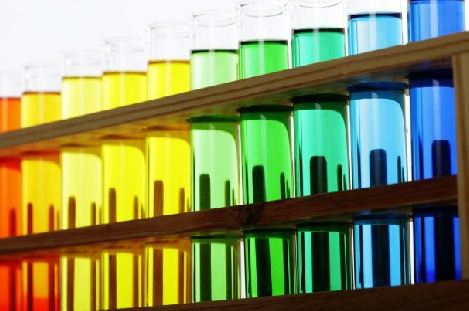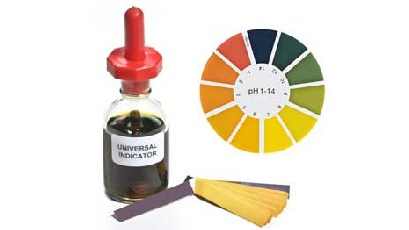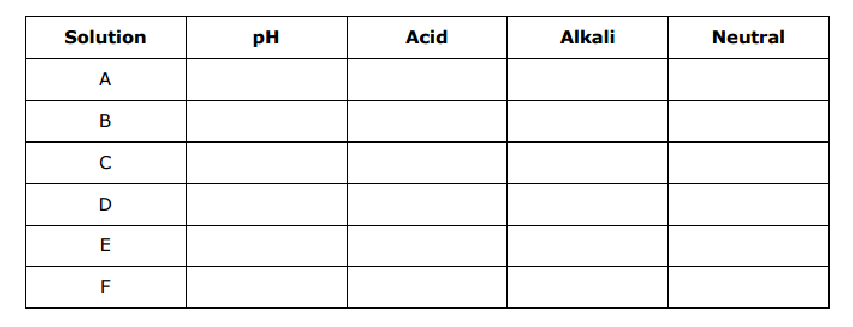





Indicators detect wether a solution is acidic or alkaline.
Indicators change colour in the presence of acids or alkaline.

Indicator
The universal indicator is one of the best methods for determining pH levels.
It is a mixture of dyes which changes colour to show how acidic or alkaline a solution is.
On the pH scale an acid has a pH of less than 7. The lower the pH, the more acidic the solution. Anything above 7 is alkaline. The higher the pH the more alkaline the solution.
7 is neutral.
As you can see, acids and bases are on complete opposite sides of the scale. When they react with each other, they neutralise each other.


Activity
When you go home, find 7 different liquids and bring them into class. These could include things like, vinegar, soap, dish washing liquid, lemon juice, clear soft drink (not coke) or milk.
Bring these liquids into class and try an guess what colour the universal indicator will turn. Will your liquid be acidic or alkali?
Fill in the table below. You should be able to guess the pH by the colour it turns. Tick wether it is an Acid, Alkali or Neutral.

Observe the video below
Magic water
So how did this happen? We simply added a strong acid in the furthest conical flash, and diluted it as we moved to the centre. Then we added a strong alkali to the far conical flask on the other side, and diluted it as we moved to the centre.
The Universal indicator, reacted with the different levels of pH and changed colour accordingly.